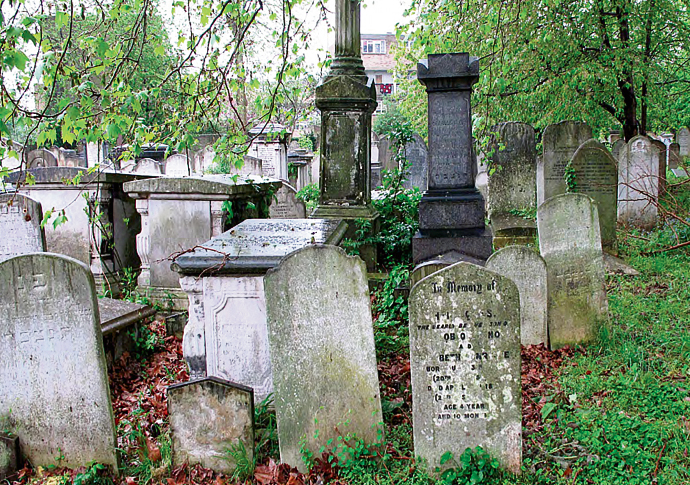Saving the cemetery – the history
Friday, 27th November 2020

Victorian cemetery at Balls Pond Road
• FURTHER to Mark Still’s letter (Labour could do with some action from the leadership, November 6), is a great pleasure that this unique Victorian cemetery at Balls Pond Road, belonging to the first Jewish Reform Congregation in this country, containing the remains of some of the most prominent historic Jewish figures of that time, has at last been put on England’s National Heritage list.
However I must correct the impression that Jeremy Corbyn played any part in the campaign that The Jewish Genealogical Society ran to save the distinguished occupants from being moved and reinterred to make way for a housing estate.
Islington Council had previously granted planning permission to the West London Synagogue of British Jews to build on this site, but planning permission had lapsed.
In 1995 a new application by the synagogue was deferred to give the fledgling society an opportunity to prove a historic case for preserving the cemetery. It was made clear by the planning committee that however strong religious feelings were they were not grounds for refusal of the application.
In this cemetery lie the remains of such luminaries as the artist, Abraham Solomon, the novelist, Amy Levy, the explorer, Ney Elias, the founders of the Daily Telegraph, the Levy Lawson family and the first Jewish barrister and QC, and a Member of Parliament, Sir Francis Henry Goldsmid.
Fortunately the historic report on the cemetery by the society resulted in English Heritage declaring this to be an important site of local historic interest.
A short time later, the synagogue again applied for permission to build on part of the site, which included 71 graves and over 50 headstones, many with poetic words written on them in the style of the time.
In the middle of this site was the grave of James Joseph Sylvester, one of the greatest and most famous of English pure mathematicians in the 19th century. Fortunately this application was finally refused on historic grounds and because of the need to conserve open space within the borough.
Finally, in 1997, the mathematicians of the world met around his grave to commemorate the birth of this famous man at his last resting place, the cemetery. I was there.
As the person who wrote the historic report on this cemetery and worked on the campaign, speaking at planning committee, I can say that Mr Corbyn did not have any contact with the campaigners at that or any other time and that this is the first occasion that I have heard of his being involved.
We are, of course, delighted and grateful that the cemetery will be preserved as a Grade II monument and that the occupants will now rest in peace.
DOREEN BERGER
Chair of the Anglo-Jewish Special Interest Group
of The Jewish Genealogical Society of Great Britain